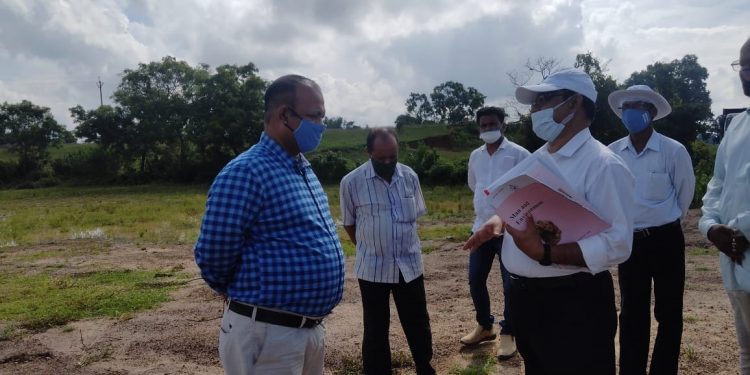Bhubaneswar/Balasore: Odia Language Literature, Tourism & Culture Minister Jyoti Prakash Panigrahi Thursday visited Durgadevi temple under Remuna tehsil in Balasore district where the archaeologists had also discovered a fortified historical site. The minister declared Rs 20 lakh package for the development of the site.
Panigrahi also said that the government has plans to establish a museum at the place. He also directed the state archaeologists to take steps for the conservation and preservation of the site including Durgadevi temple situated in the village.
Durgadevi is located about 20 km from Balasore town in Remuna tehsil, bordering Mayurbhanj district. The site has circular mud fortification of about 4.9 km in circumference and is situated in between rivers Sona on south and Budhabalang on its north-eastern direction. The village is named after its presiding deity Durgadevi.
Two small nullas Gangahara and Prassana join the site from north and south, forming a natural moat at the site which was an ancient water management system developed at least 4,000 years ago.
According to sources, archaeological excavation was started with an aim to correlate the simultaneous growth and development of maritime activities and urbanisation in East Coast of India linking Ganga valley in north and Mahanadi valley in Central Odisha.
During excavation, articles from Chalcolithic period including earthen vessels, earthen jewellery, earthen toys and iron nails were found from the site. The findings also include iron slug, javelin and nail as well as red and black earthen pots believed to be of the Iron Age. The team also discovered the base of a circular hut, red-painted pottery, black slipware, red slipware and copper objects belonging to Chalcolithic Age.
After receipt of licence from Archaeological Survey of India (ASI) for archaeological excavation project in February 2021 and approval of the project by the Culture Minister, the excavation was started from March 2021 and continued till May 5, 2021 in the first phase.
In order to authenticate its time period, the excavated objects have been sent to a UGC-managed laboratory in New Delhi for testing. The excavation work has been halted for the time being due to second wave of Covid-19. The new findings will certainly add a new chapter to the history of Odisha, the sources added.






































